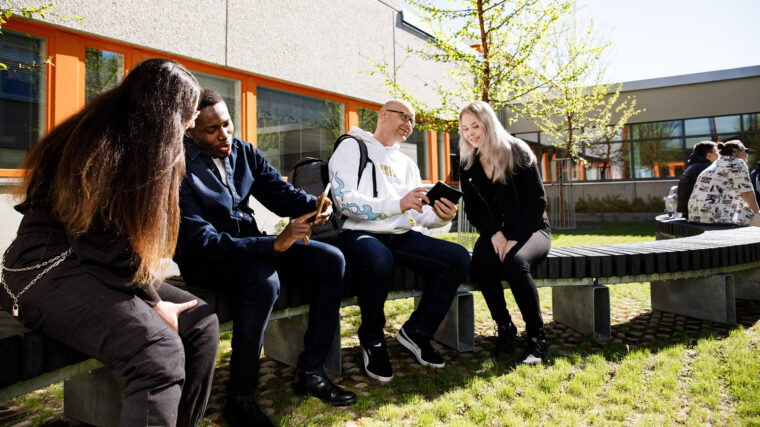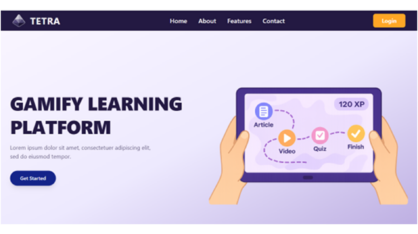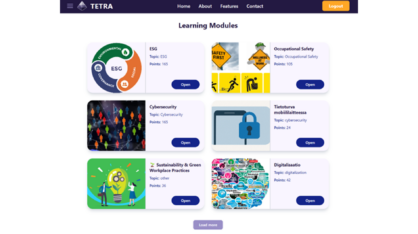The way people learn can differ from one individual to another but so do the methods of teaching. In the worst case the expectations on both sides can lead to disappointment. (Visser et al., 2006). However, when you meet people from different places, different cultures and you are willing and open to experience new things and to learn, you might end up in a situation where you have the perfect possibility to expand your knowledge on difference, but that does require the willingness to lower your own guard and adapt. (Moss et al., 2009). In my case this means adaptation to the differences in teaching methods and the ways of learning. I was lucky enough to get a perfect learning opportunity when I got into the well-established cooperation between Avans University of Applied Sciences from Netherlands and Vaasa University of Applied Sciences from Finland. In this program I am teaching a course Cross Cultural Management, but that is not important now.
From the hotel lobby to well established international program
The cooperation was started through the active work of Peter Smeds and Thomas Sabel when they were on Erasmus Exchange in Belgium. On their journey to expand the VAMK’s partner network they faced challenges and rejection but finally in a hotel lobby they crossed paths with two gentlemen from AVANS, Pieter Schep and René Klep. Already during the first day they managed to form the base for the program that has since grown. This autumn it is the sixth implementation of the program. Increasing number of students from both countries are joining the program, willing to learn and exchange knowledge by their counterparts. While the Dutch students will complete an entire minor (30 credits) during the program, VAMK students can choose more freely from the joint offering. The course Project Assignment acts as the flagship of the minor and is compulsory for all participants. While the students seem to enjoy the experience and cooperation possibilities, also the cooperation with the teachers is worth noticing. While still trying to find my place in the program, I have noticed the great relationship between the two institutions, but also the people involved. Everyone seems to be happy to operate together and especially during the visits the atmosphere couldn’t be friendlier.
From interesting topics to real-life case
During the flagship course Project Assignment, the students get to work on a real-life assignment given by an interested company who usually aims to grow its business or find alternative business models. Wärtsilä, a Finnish technology company, gave the students a task to work with in the first two implementations, then it was a Vaasa-based energy project called Fesio. During the recent implementations as well as the coming autumn, the target company has been Jobe. Jobe describes itself as a community, a global movement. A movement to which the students of this program have been invited to contribute through real-life cases aiming for growth, fulfilling Jobe’s aim to provide its products for everyone on water while providing fresh new ideas regarding sustainability.
Different topics provide different views on the same subject
The subject for the project is creating sustainable business solutions. When the topic is approached from the different viewpoints like economics, management, law, marketing and project management, we start noticing the similarities, but a lot the differences that each field brings to the topic. To give a simplified example, in marketing the sustainable values are used to sell solutions, the law then dictates the rules and regulations with which we need to work, communicate, and cooperate to avoid potential issues with, for example, green washing. Simultaneously through management you can build a company that drives to improve on sustainable values throughout the organisation, while being profitable in constantly changing environment. Then, on the other hand, sustainability as such can mean completely different things depending on the studied field. In marketing it can be the image you share. In management it can be the goal you drive towards with people while in economics it could mean that actions are taken in a way that maintains the sustainability of business, contant(ly increasing) money flow to name one. In my opinion this mix is a perfect one for students as it provides them with a lot of key knowledge throughout different basic functions of a business; knowledge they can utilize in the mentioned real-life case, which to them makes the learning more interesting. They get to use the skills they learn during the program, in a case they are constantly working with as part of a multicultural, international group. And that if anything, creates a perfect possibility for knowledge sharing.
So different, yet so similar
Finally, I want to wrap up my learnings from the cooperation so far.
My main finding has been to use the similarities to build and the differences to learn and innovate. As Sharps (2018) nicely puts it “Diversity means the acceptance of uniqueness and the contributions, appreciation, respect for, and inclusion of all human beings” and continues “alhough people may differ in how they look, think, behave, love, believe, communicate, live, work, and play, human beings are more alike than they are different. Embracing the differences and similarities allows us to celebrate the richness of diversity and the people of our country and world.” And in the program discussed in this article, we are not only acknowledging this diversity, but we aim to provide value to students, teachers and, of course, our changing target company. The program is built in cooperation, and it includes subjects relevant to the success of a business and is filled with lectures and workshops. But in the program, we make sure to reserve enough time to get to know the people involved, embracing the difference and learning from people with different backgrounds, outside the lectures as well.
To me that is an excellent scenario for Learning Across Boarders!




